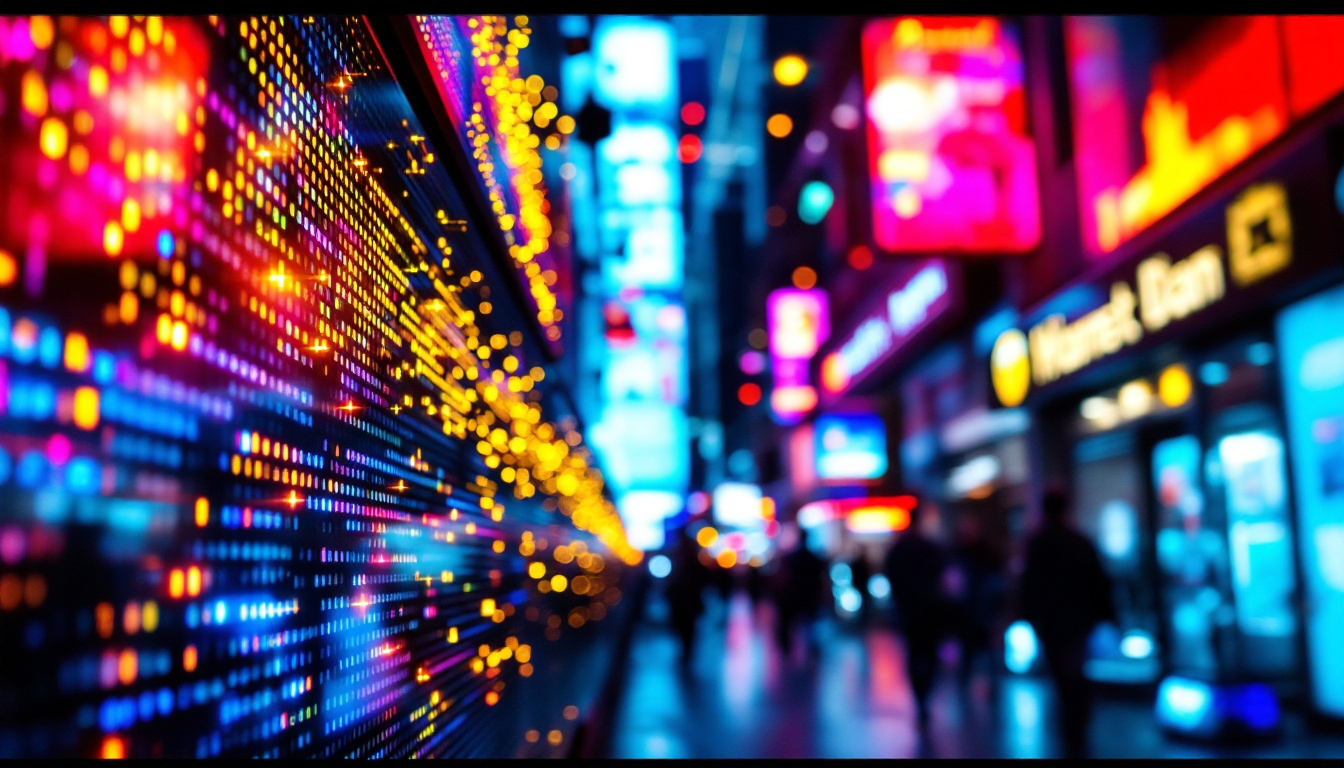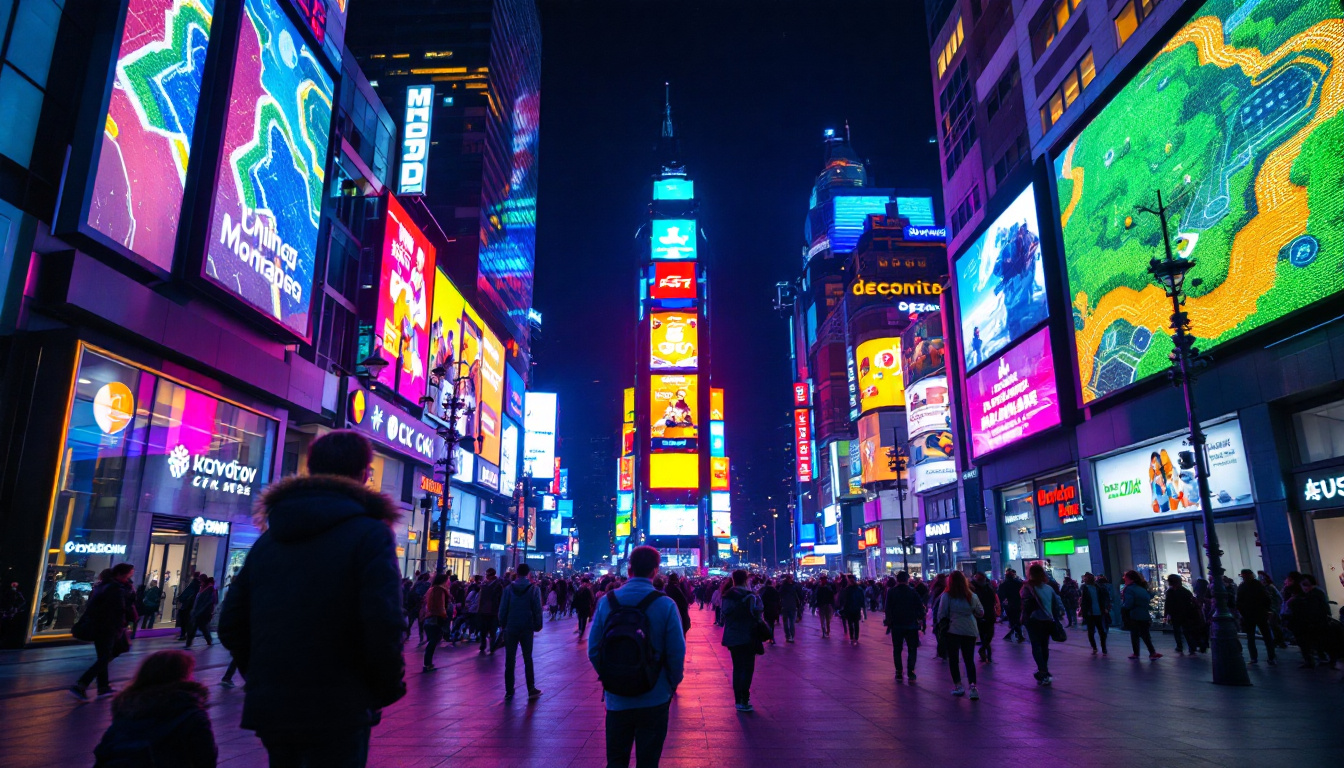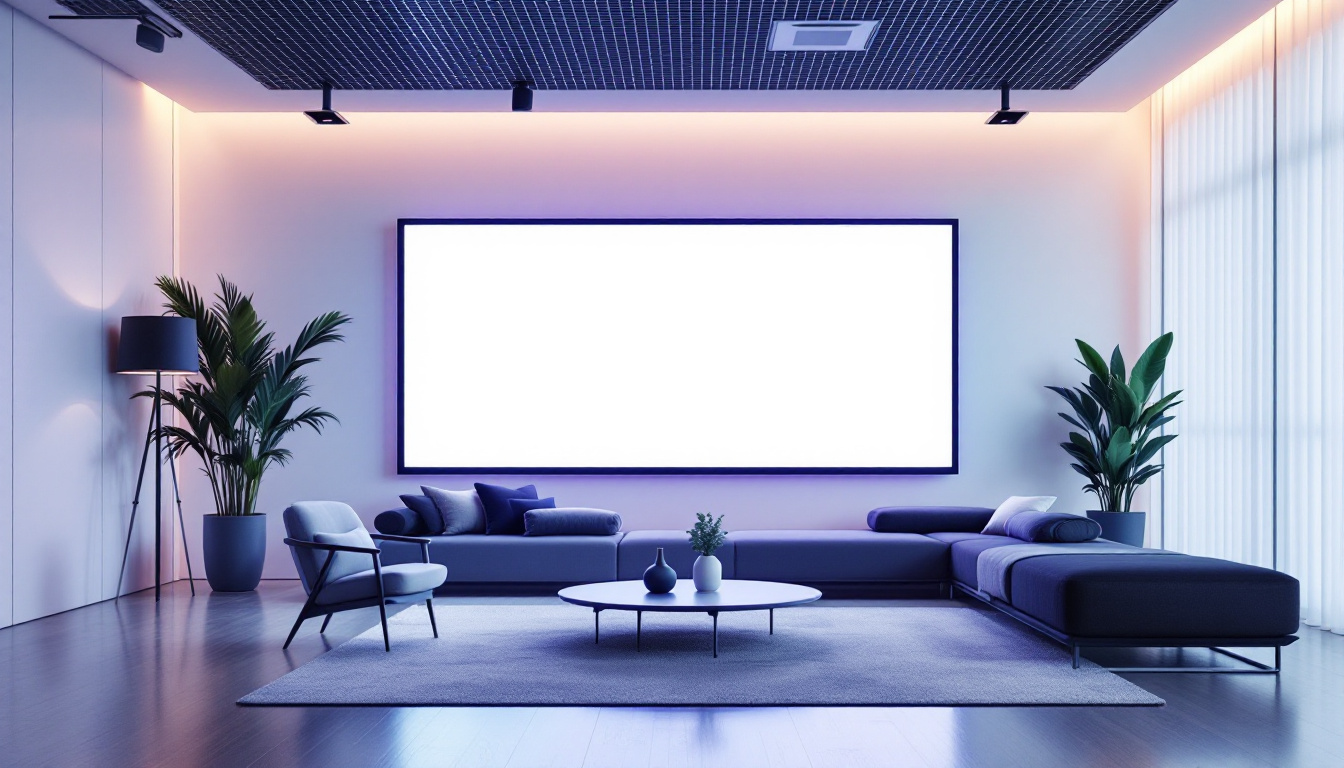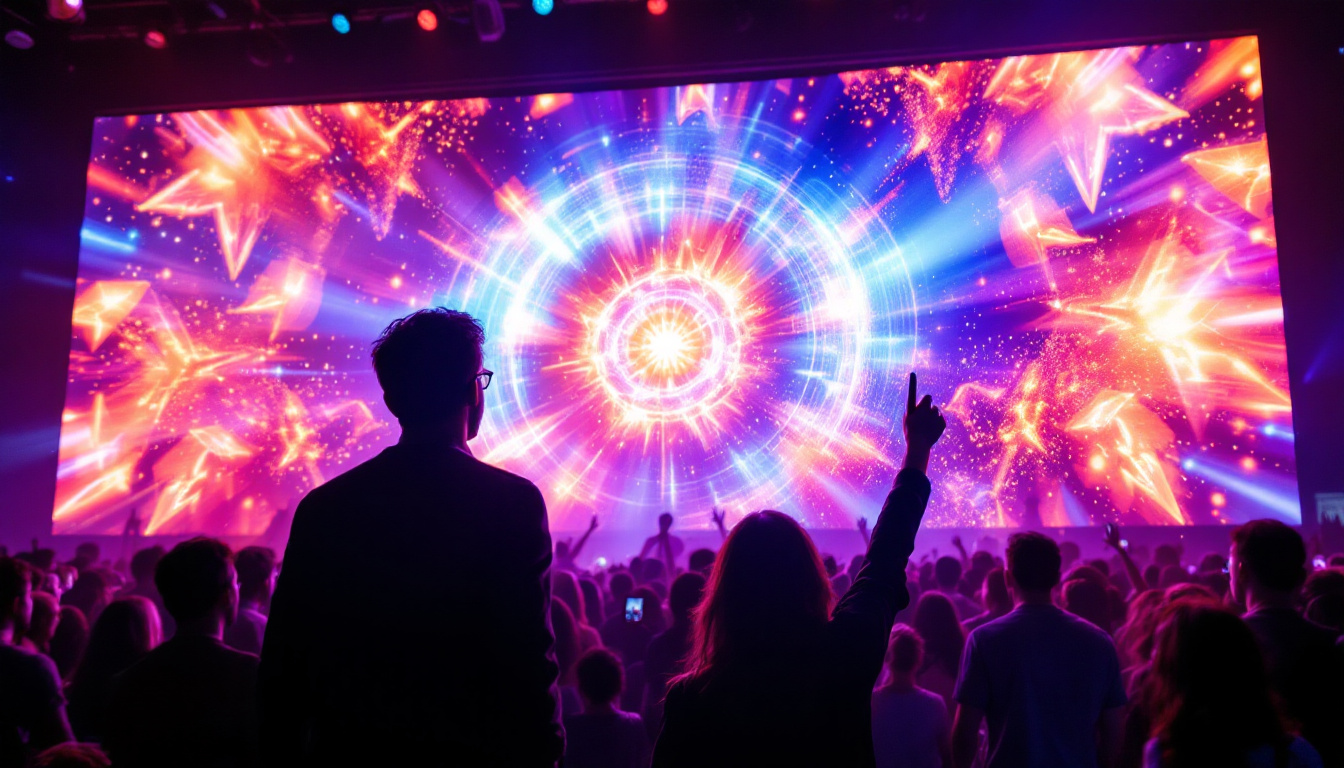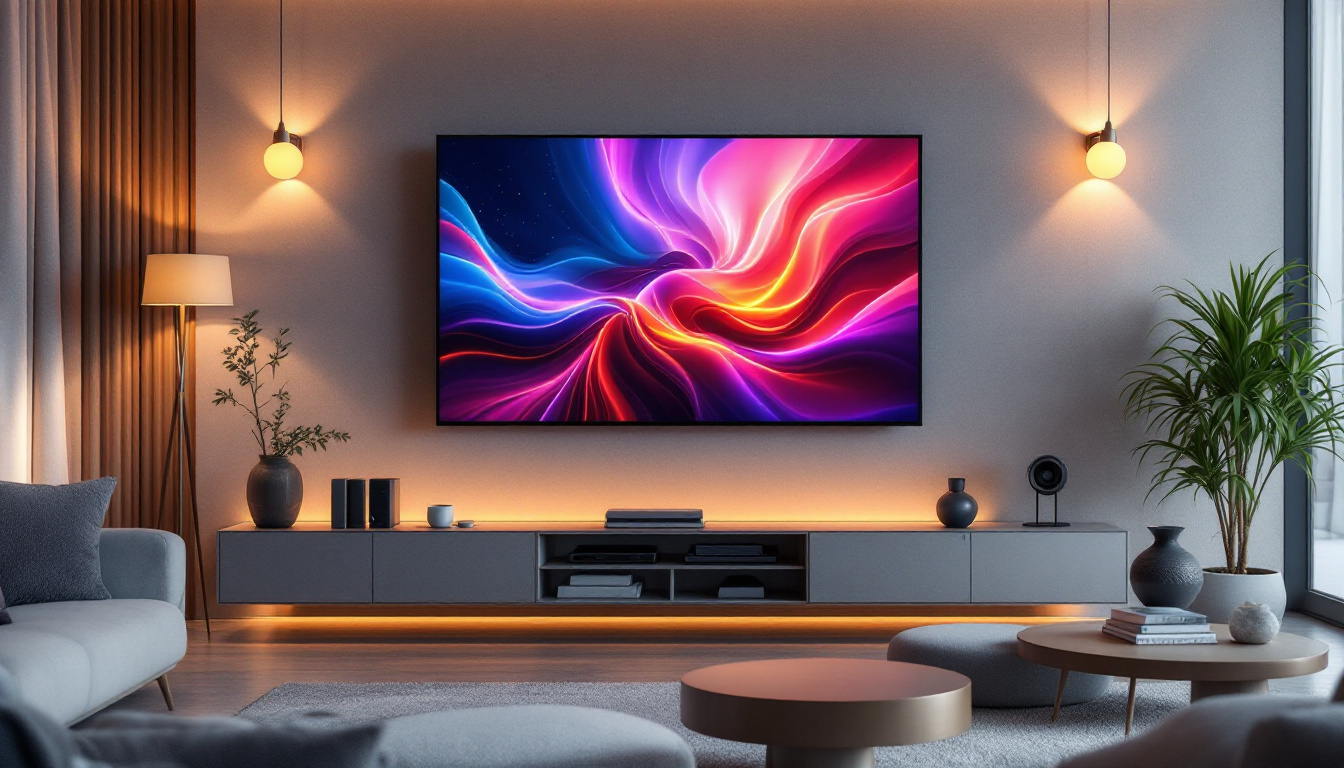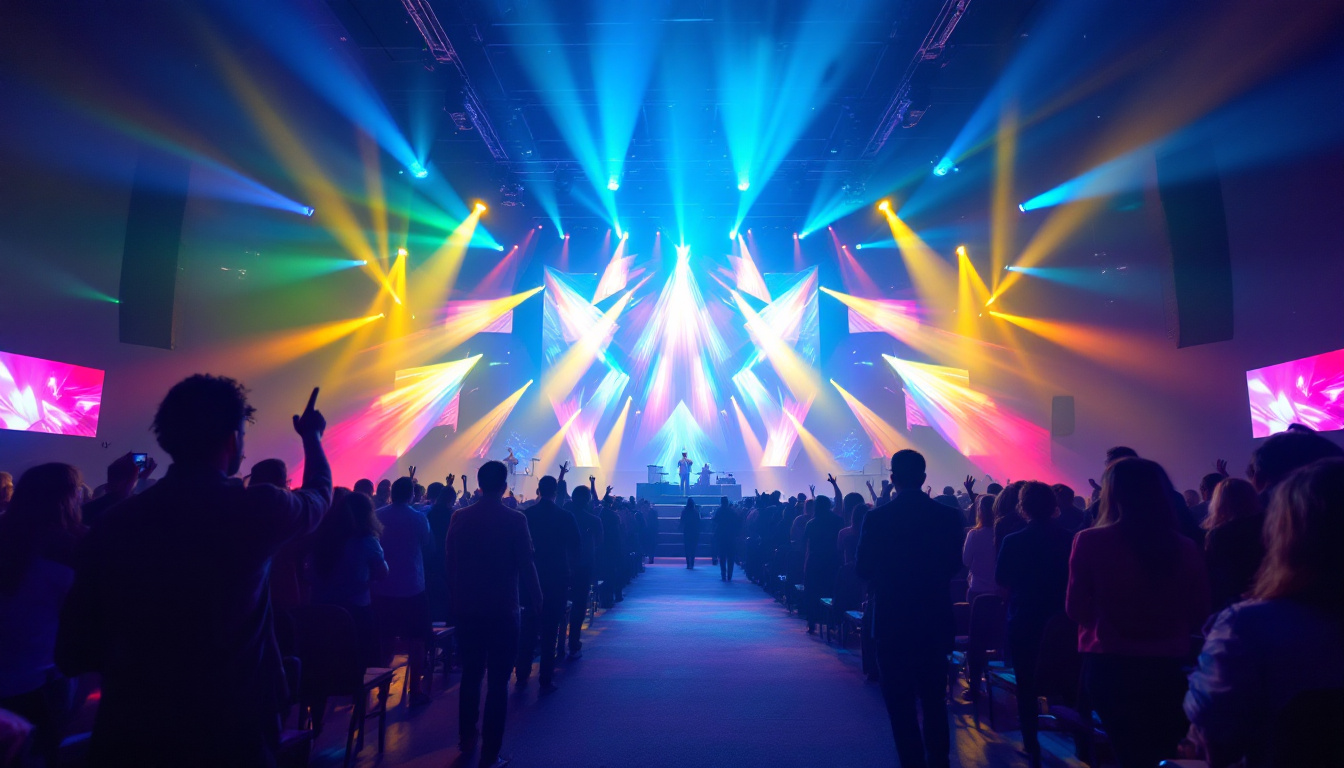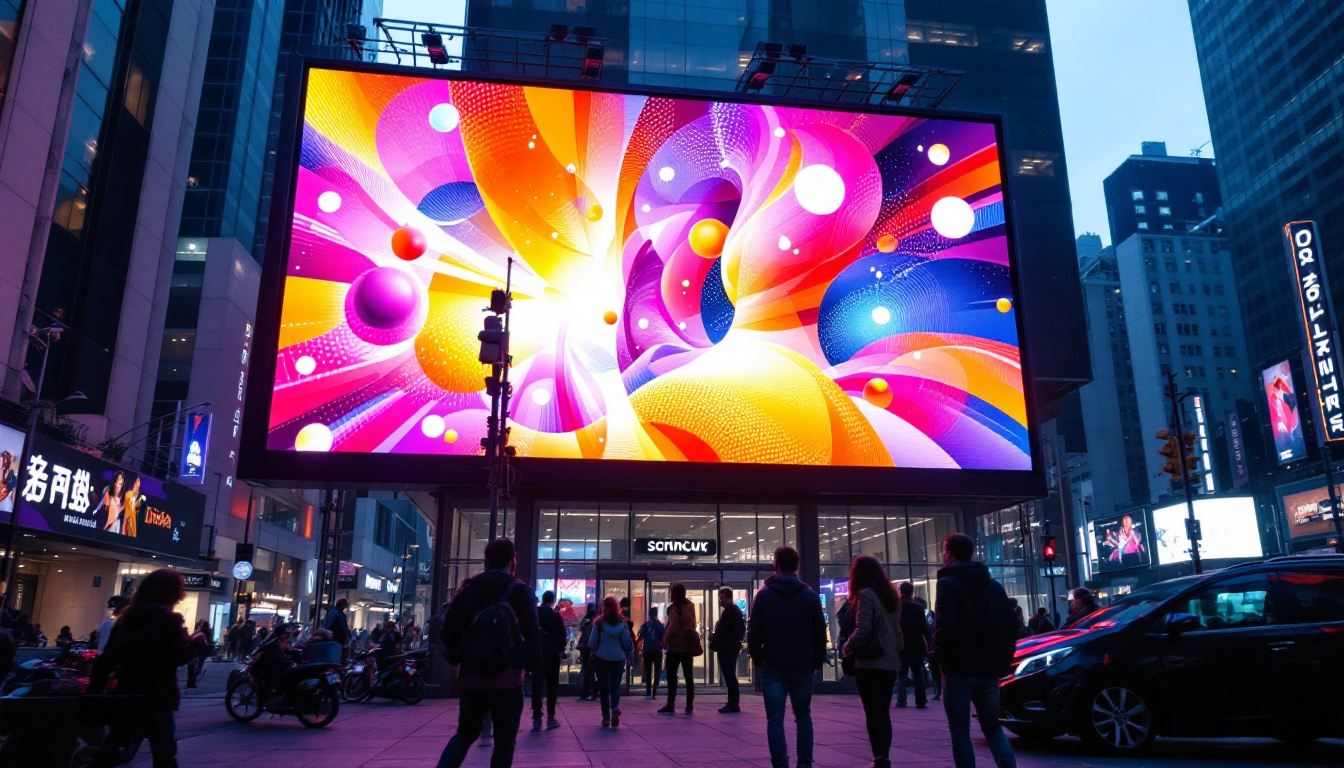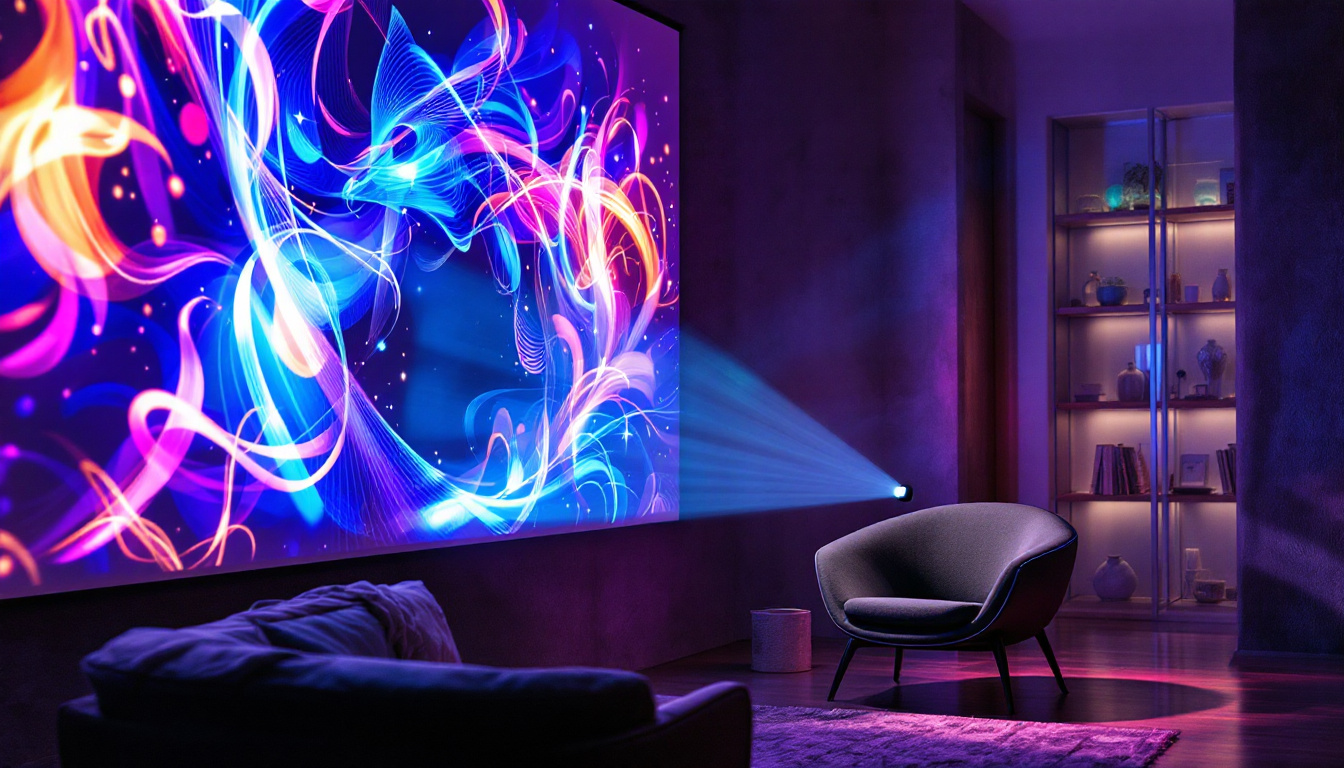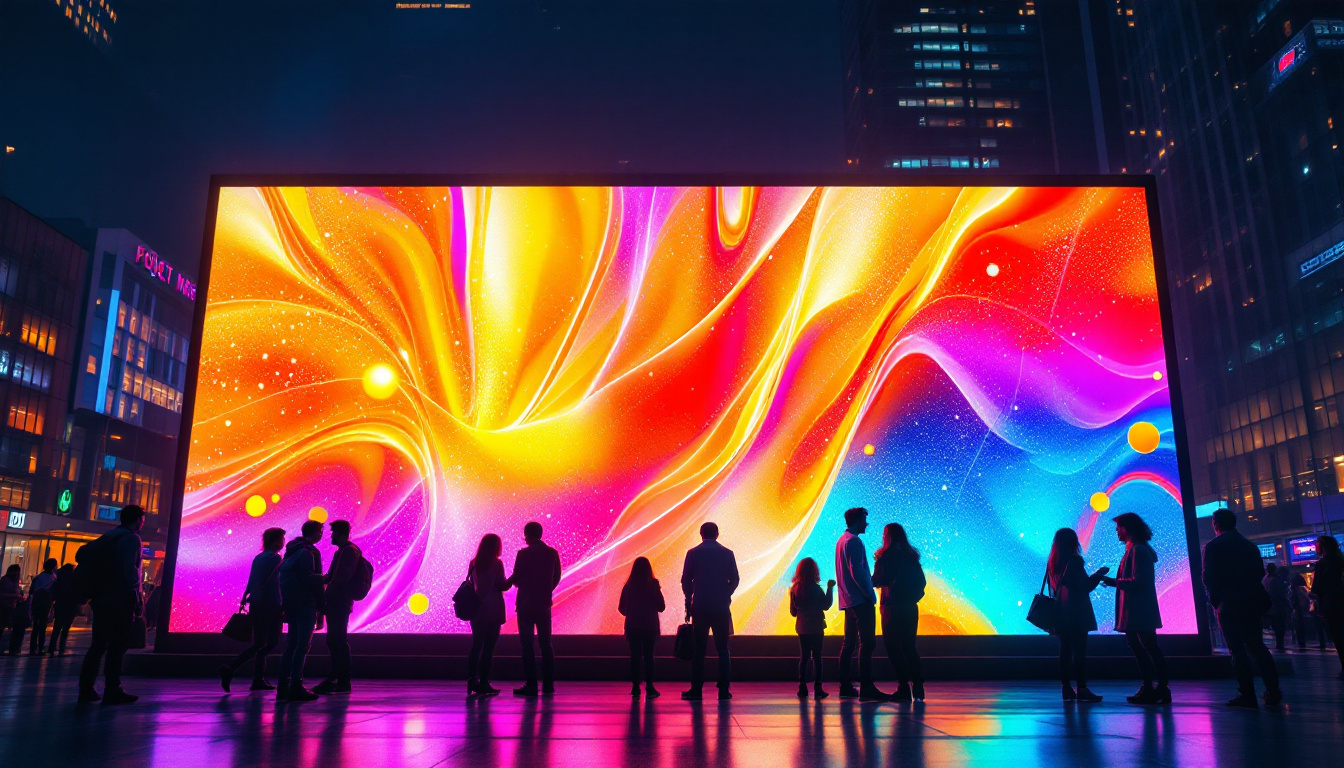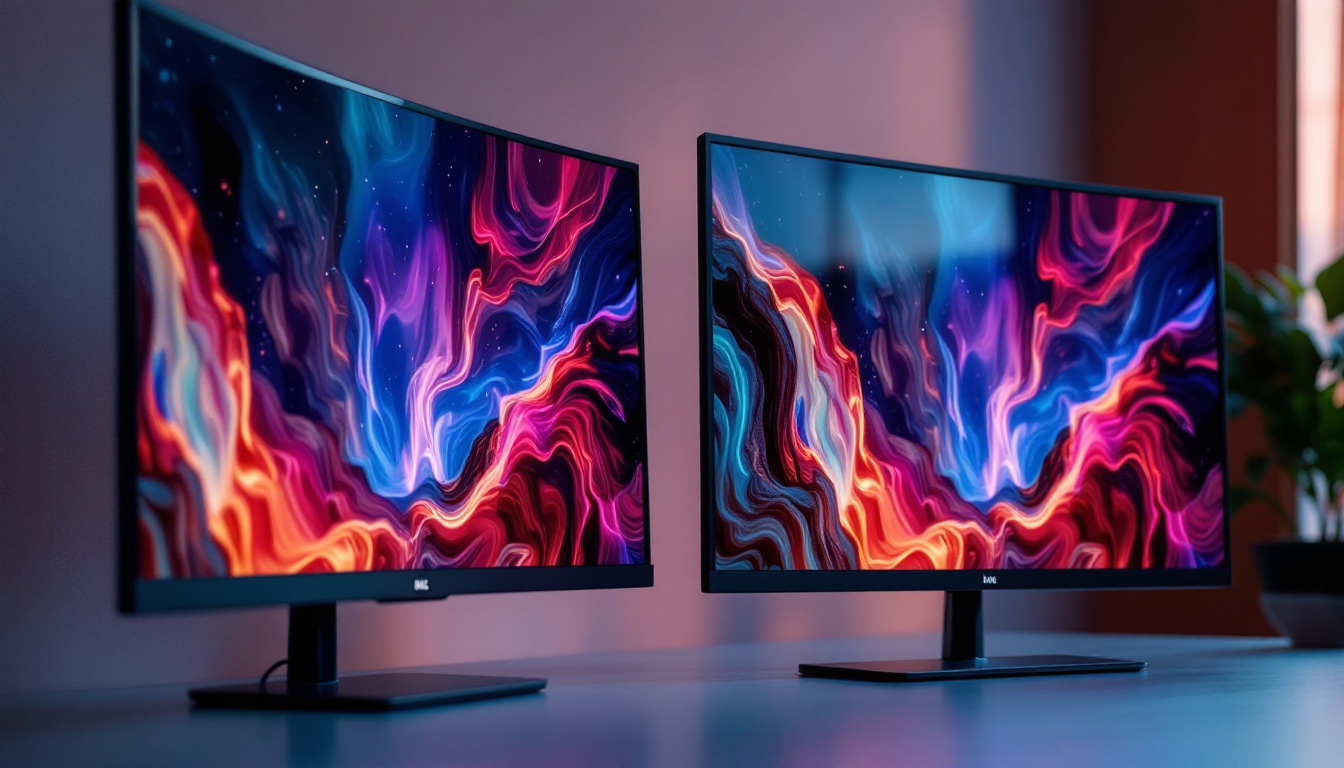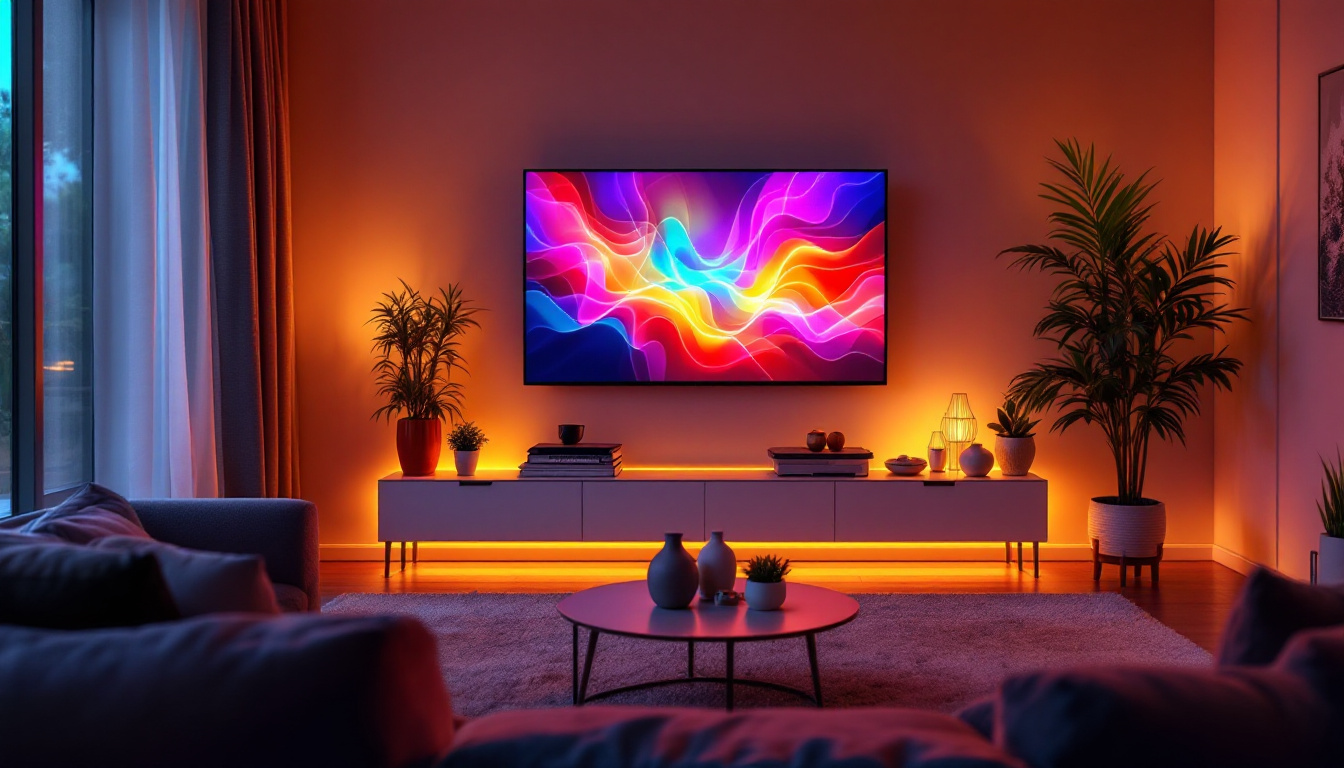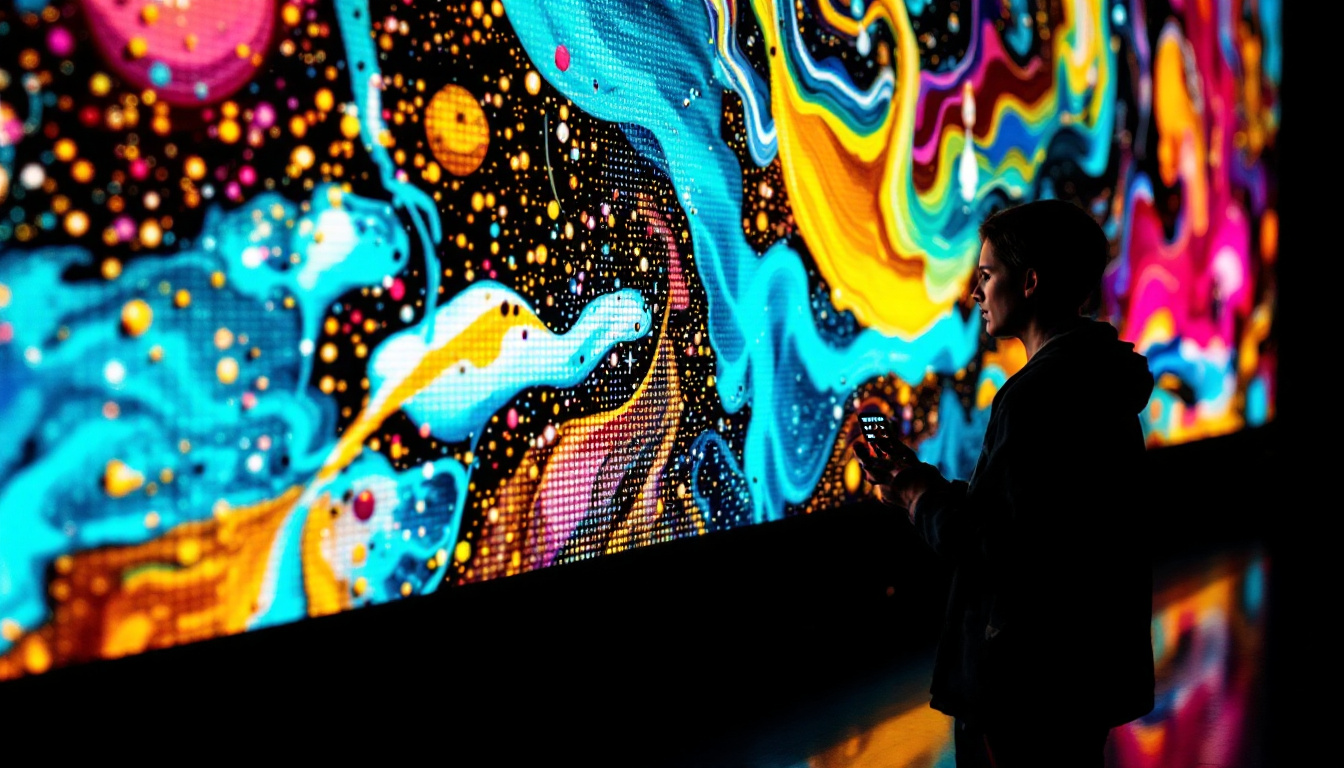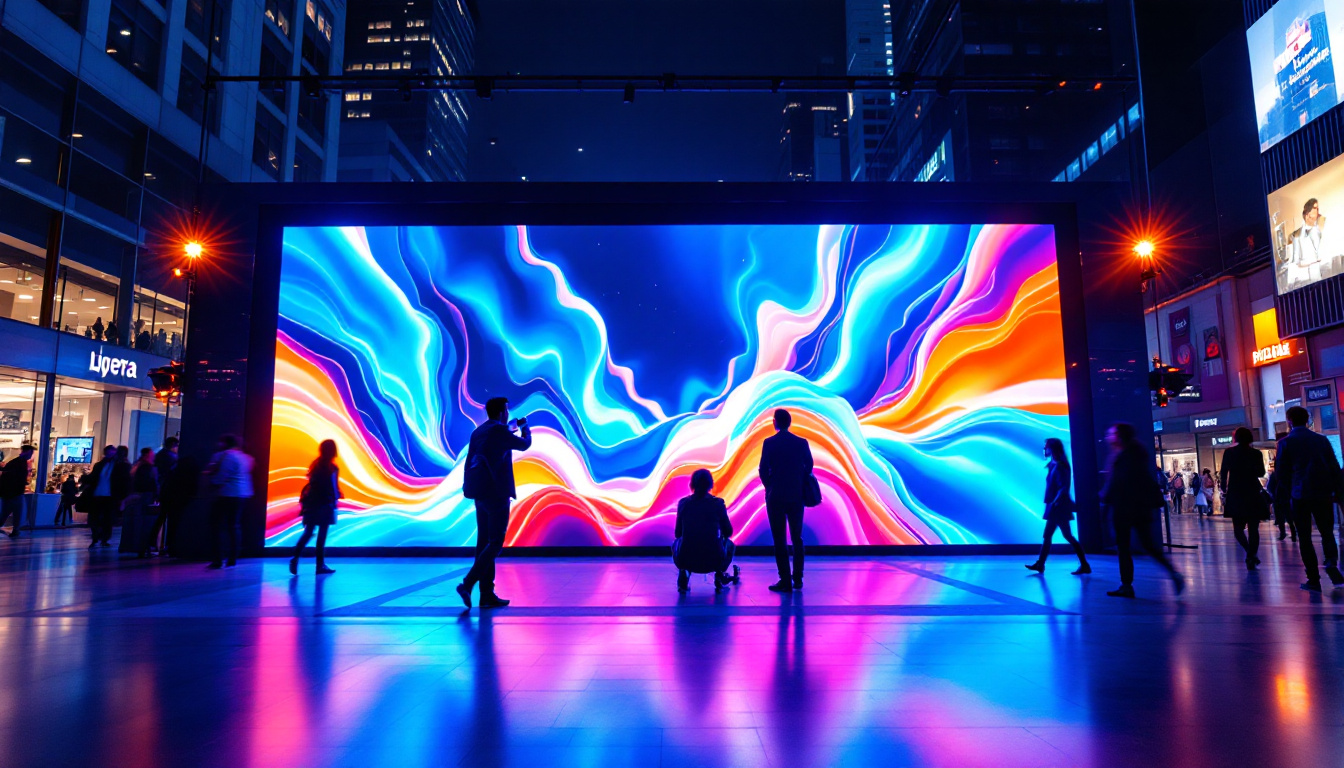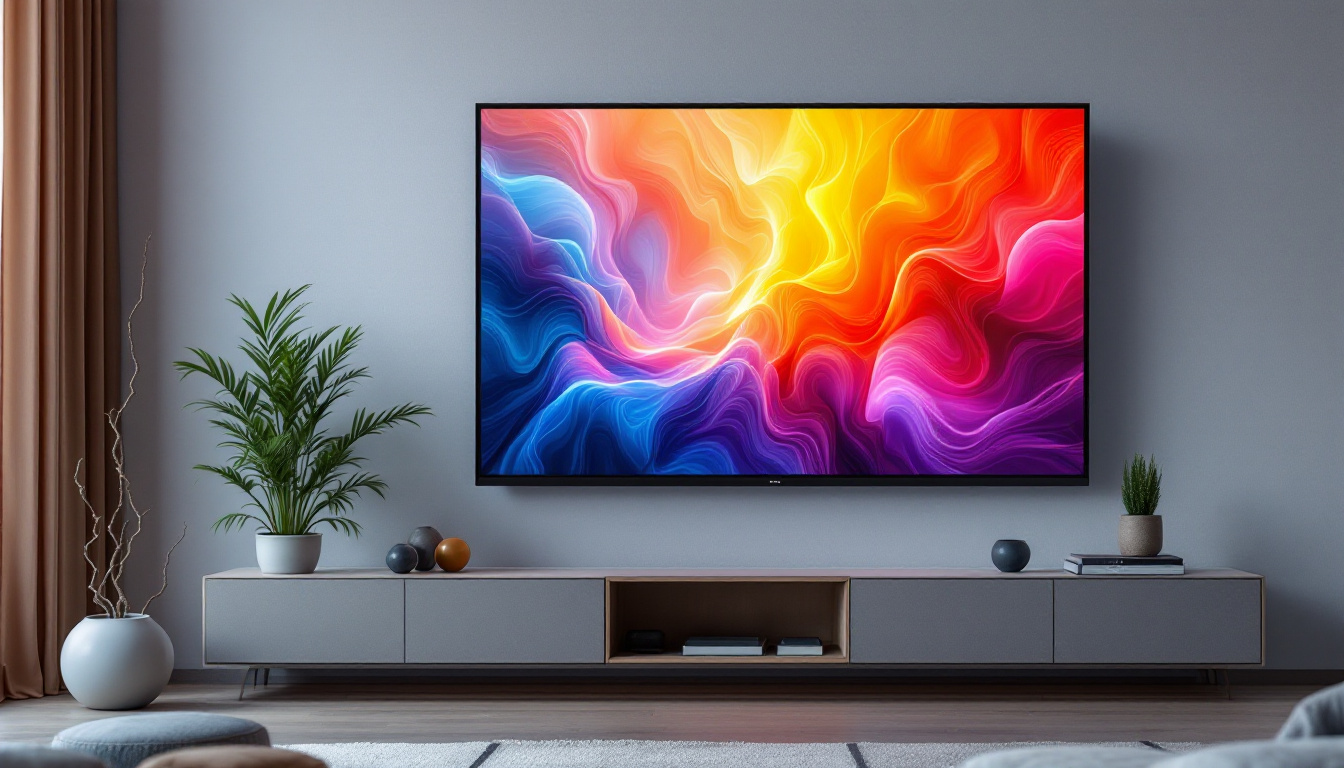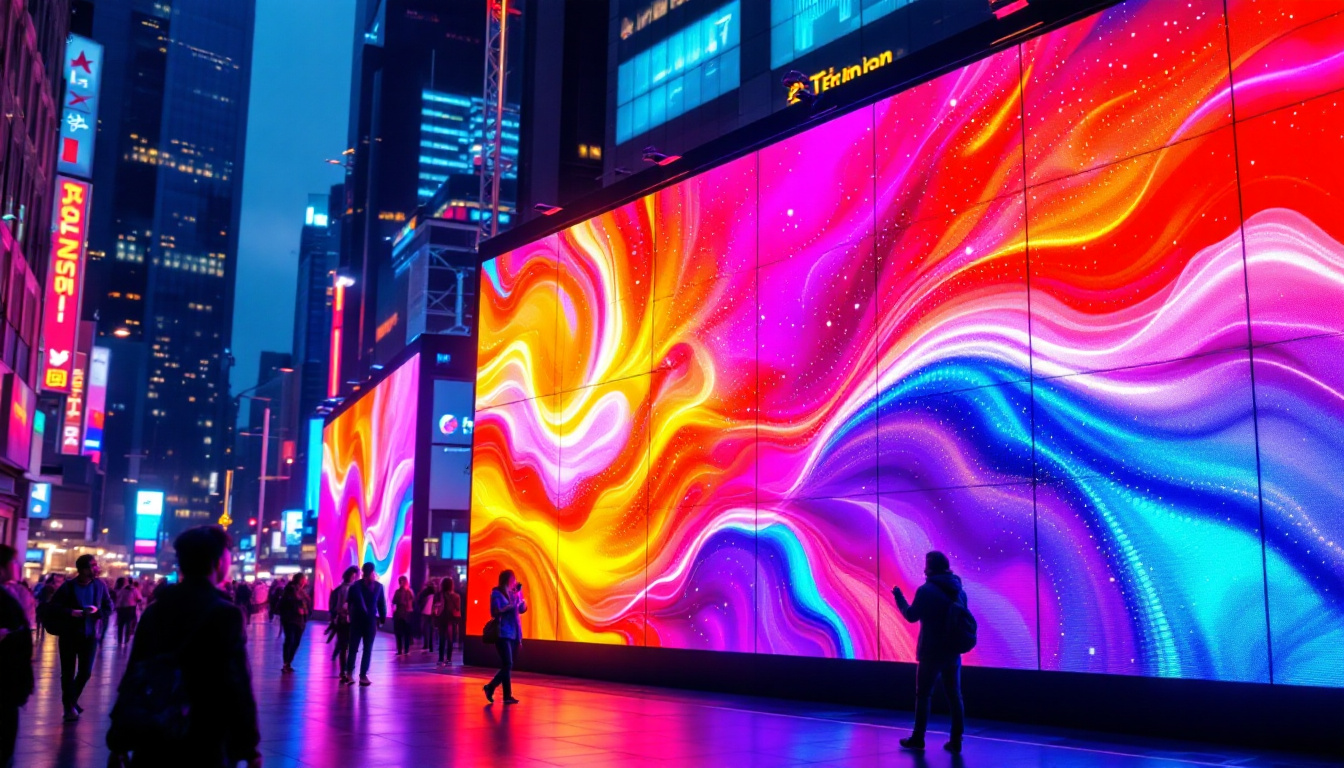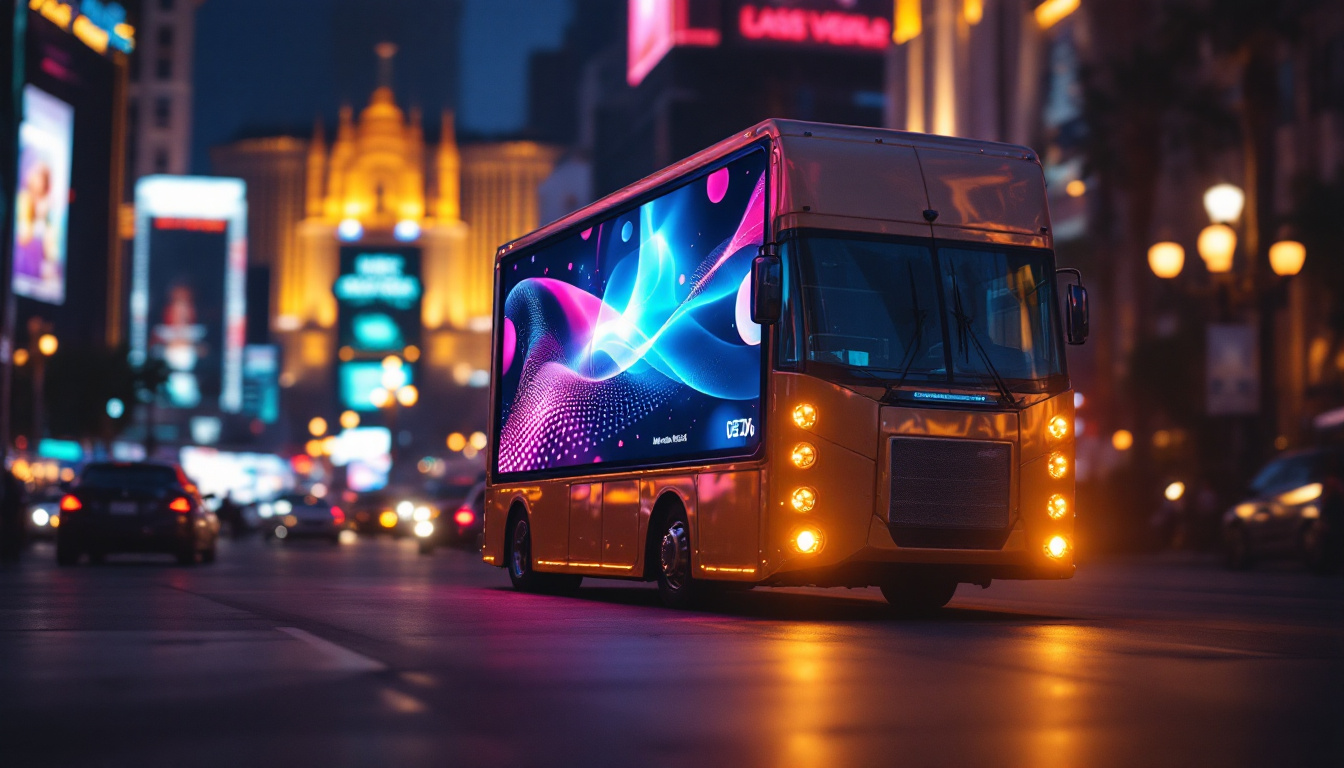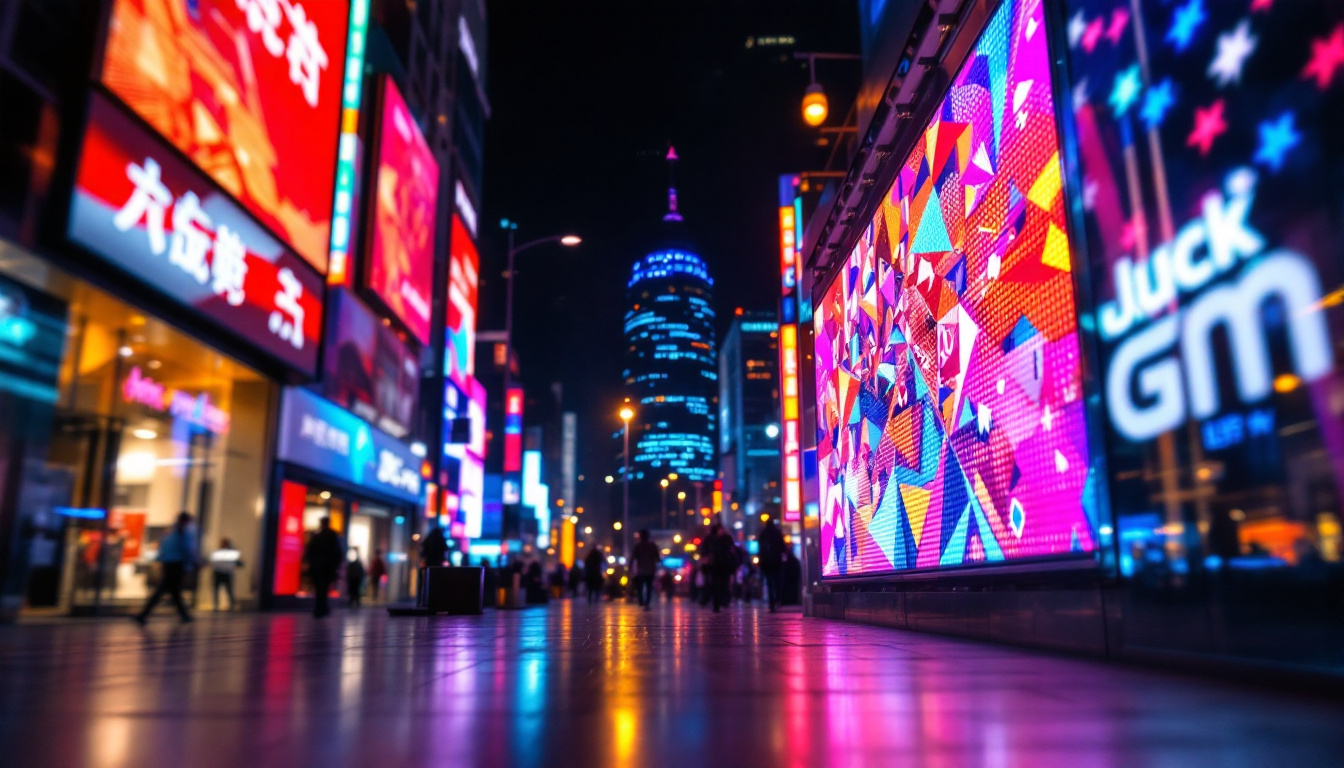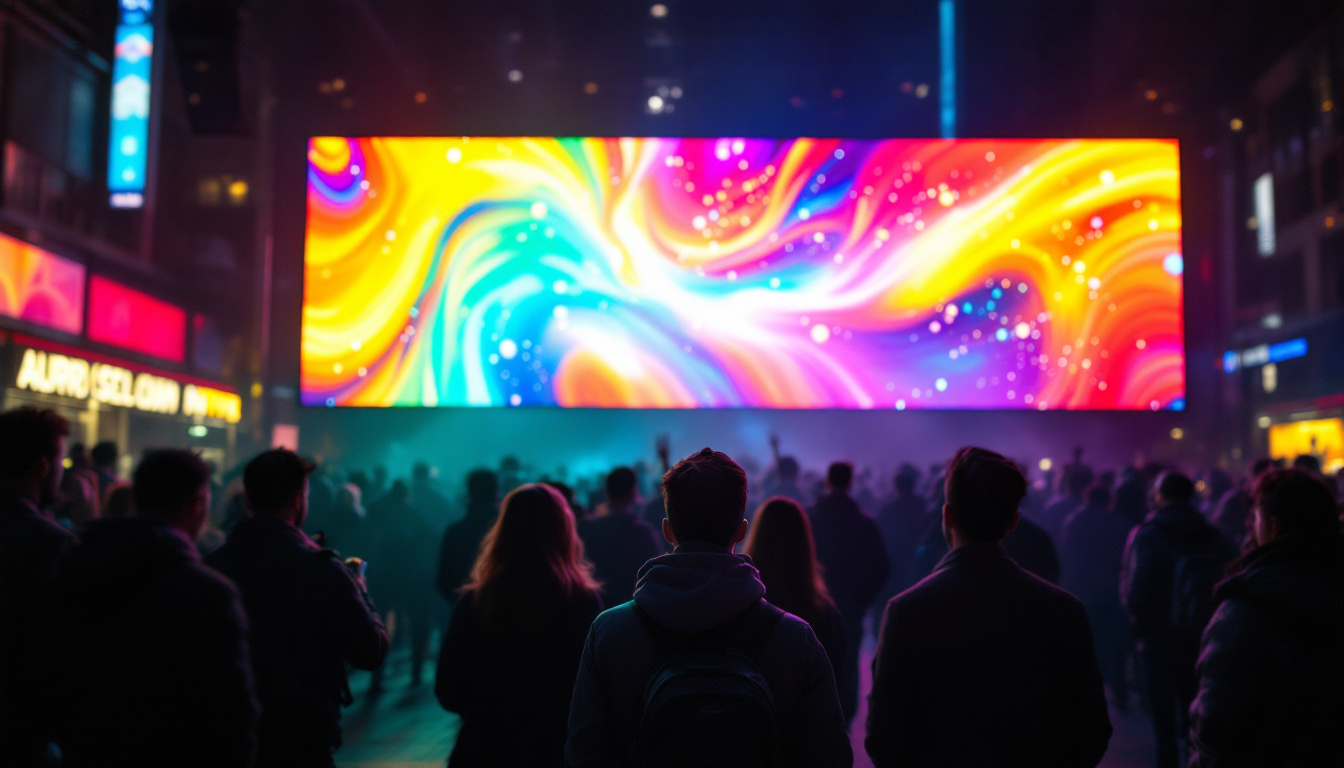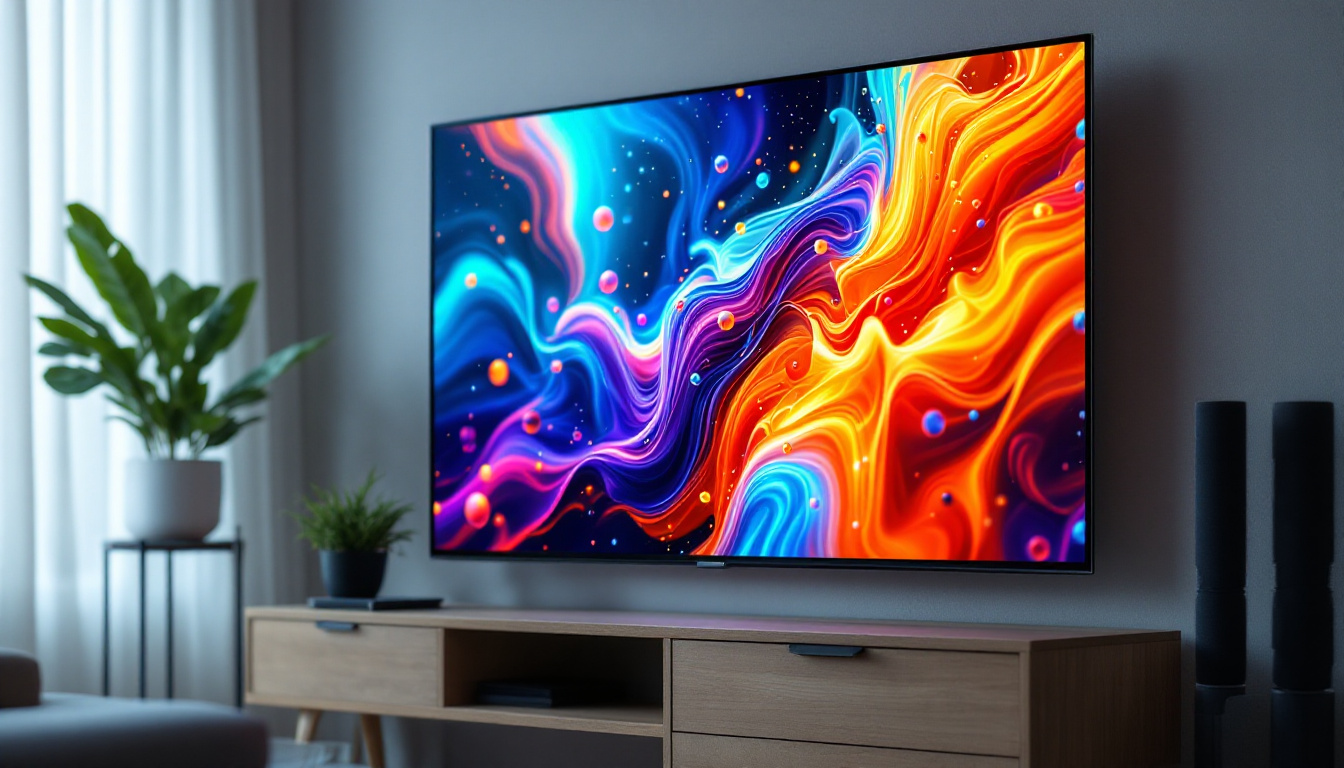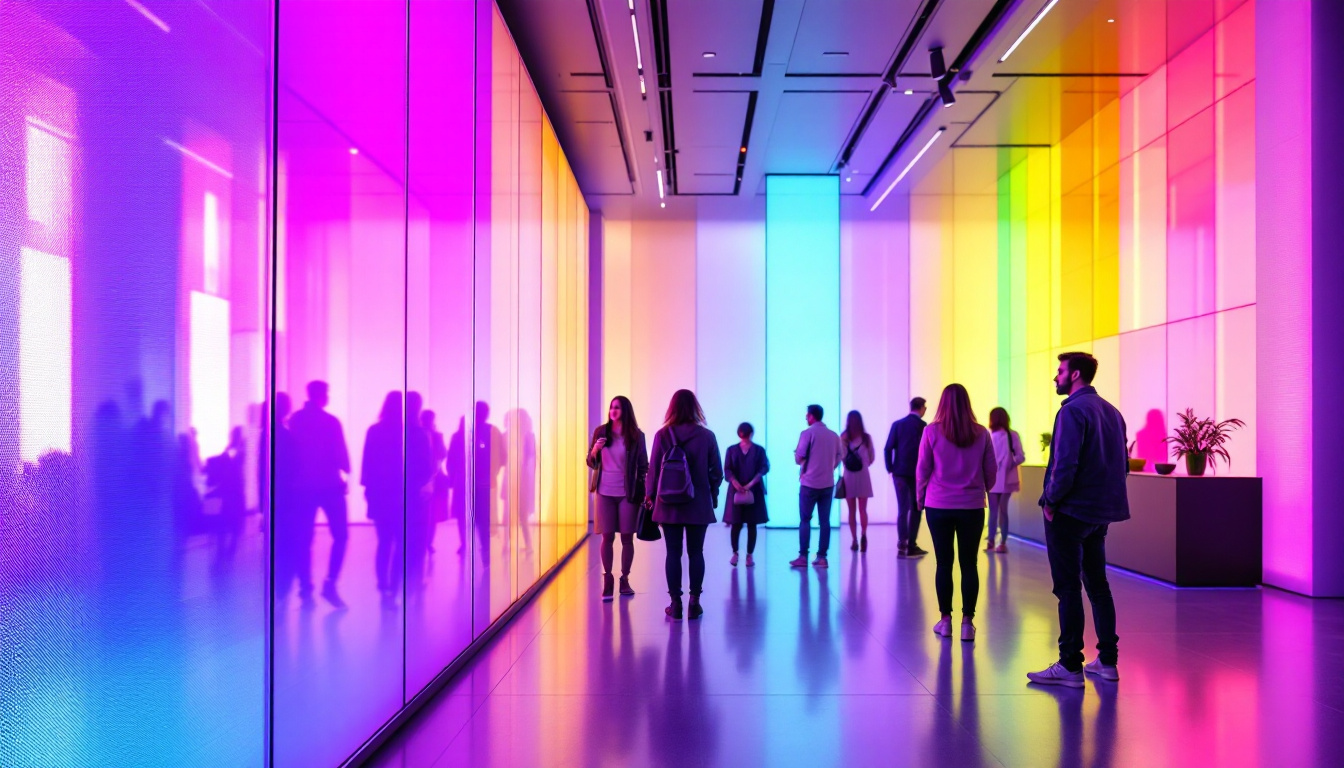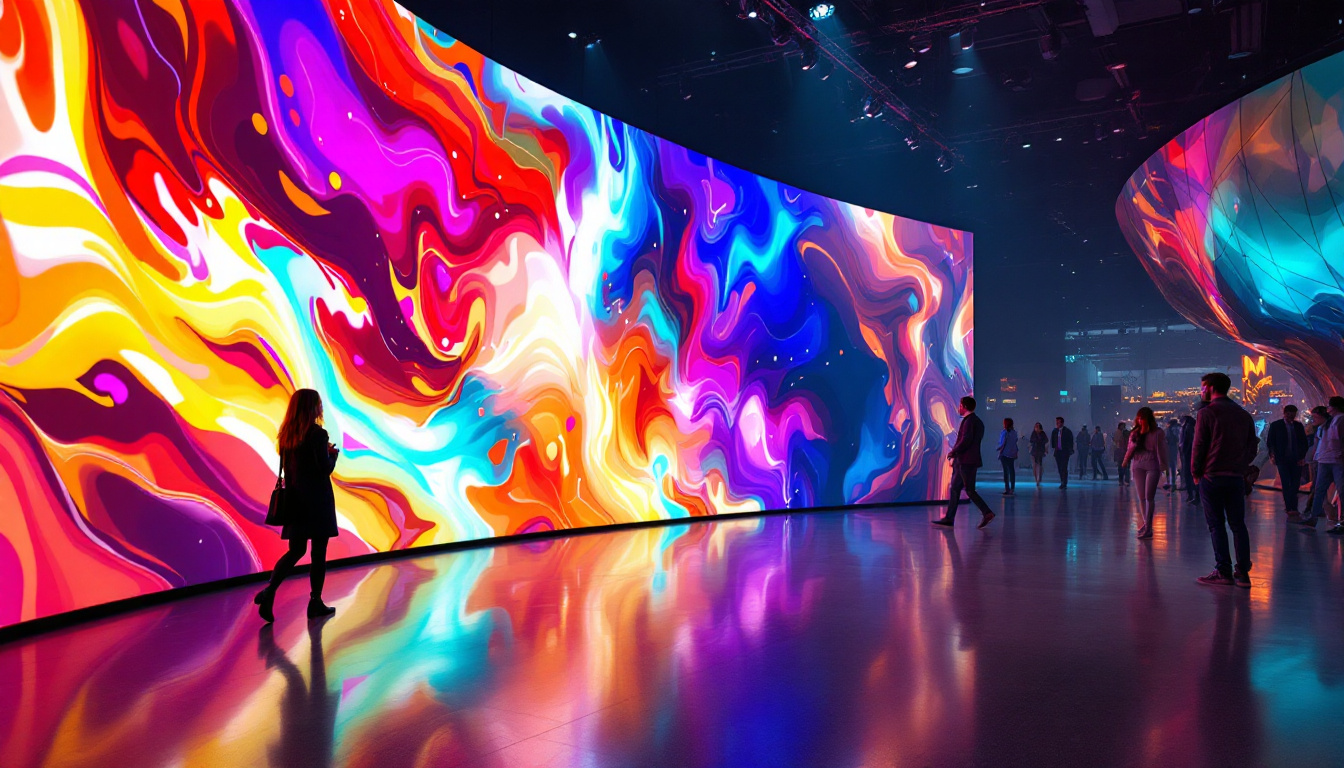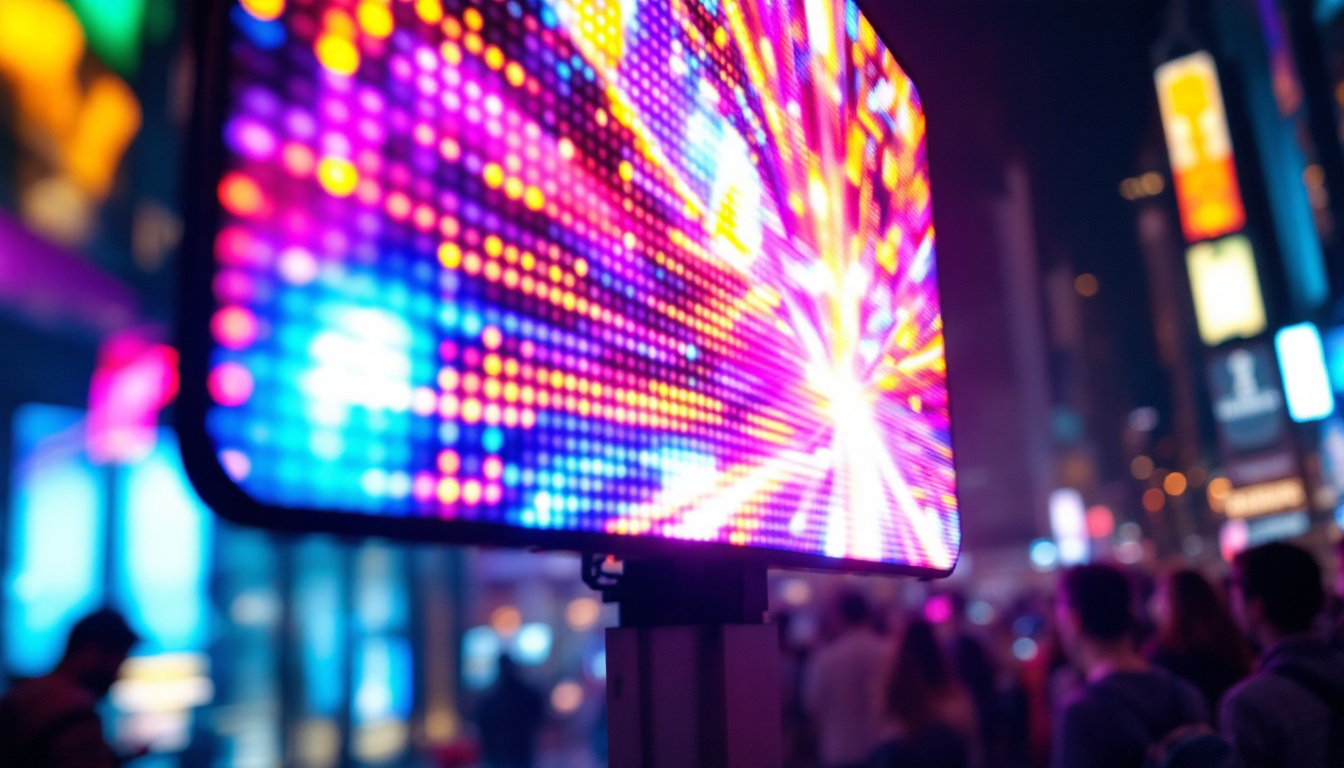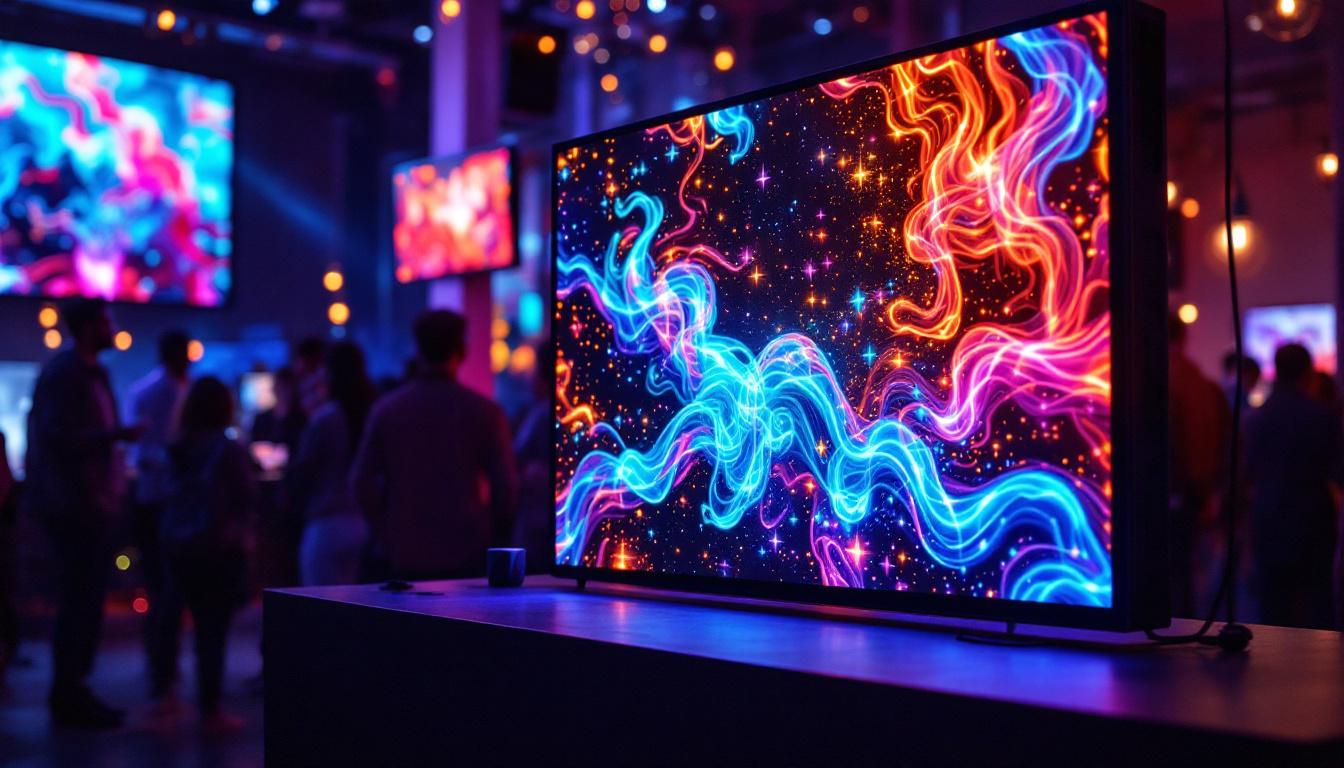In the world of commercial television, LED displays have become a cornerstone of modern broadcasting and advertising. Their vibrant colors, energy efficiency, and versatility make them a preferred choice for businesses looking to capture audience attention. This article delves into the intricacies of LED displays, exploring their technology, applications, and benefits in the commercial sector.
Understanding LED Technology
Light Emitting Diodes (LEDs) are semiconductor devices that emit light when an electric current passes through them. This fundamental technology underpins the functionality of LED displays, which are widely used in various commercial applications. Understanding how LEDs work is crucial to appreciating their advantages over traditional display technologies.
The Basics of LED Operation
LEDs operate on a simple principle: when electrons move through a semiconductor material, they release energy in the form of light. This process is highly efficient, which is why LEDs consume significantly less power compared to incandescent or fluorescent lights. Moreover, the compact size of LEDs allows for the creation of thin and lightweight displays, making them ideal for commercial use. The lifespan of an LED can also reach up to 50,000 hours or more, significantly outlasting traditional bulbs and reducing the frequency of replacements, which is both cost-effective and environmentally friendly.
Types of LED Displays
There are several types of LED displays, each designed for specific applications. The most common types include:
- Direct View LED Displays: These displays use individual LEDs to create images and are often used in large outdoor screens.
- LED Backlit Displays: These are LCD screens that use LED technology for backlighting, providing better contrast and color accuracy.
- MicroLED Displays: A newer technology that offers higher resolution and better performance, particularly in large formats.
In addition to these types, there are also OLED (Organic Light Emitting Diode) displays, which are sometimes confused with traditional LEDs. OLEDs utilize organic compounds to emit light, allowing for even greater flexibility in design and superior color reproduction. This technology is particularly popular in high-end televisions and mobile devices, where vibrant colors and deep blacks are essential for an immersive viewing experience. Furthermore, advancements in LED technology continue to emerge, such as the development of flexible LED screens that can bend and conform to different shapes, opening up new possibilities for innovative display designs.
Another exciting aspect of LED technology is its role in energy-efficient lighting solutions. Beyond displays, LEDs are increasingly being used in residential and commercial lighting applications, contributing to significant energy savings and reduced carbon footprints. Smart LED lighting systems, which can be controlled remotely and programmed for various settings, are becoming more prevalent, allowing users to customize their lighting environment while maximizing efficiency. As the demand for sustainable technology grows, LEDs are positioned to play a pivotal role in the future of both display and lighting solutions.
Applications of LED Displays in Commercial TV
LED displays have found numerous applications in the commercial television landscape. Their adaptability and performance make them suitable for various environments, from retail spaces to broadcasting studios.
Advertising and Marketing
One of the most prominent uses of LED displays is in advertising. Retailers and brands leverage these displays to showcase dynamic content, attracting customers with vibrant visuals and engaging advertisements. The ability to change content quickly allows businesses to tailor their messages to specific audiences or events, maximizing impact. Furthermore, the integration of motion graphics and animations can significantly enhance viewer engagement, leading to higher conversion rates. This capability is particularly beneficial during peak shopping seasons or promotional events, where brands can instantly update their displays to reflect current offers or trending products, ensuring they remain relevant and captivating.
Broadcasting and Studio Environments
In broadcasting, LED displays are increasingly being used in studios for news and entertainment shows. They provide a versatile backdrop that can be easily modified to suit different themes or segments. Additionally, their high brightness levels ensure that the visuals remain clear and vibrant, even under studio lighting conditions. The use of LED technology also allows for a broader color spectrum, enhancing the overall aesthetic of the broadcast. This is particularly advantageous for live shows where visual storytelling is key; the ability to incorporate real-time graphics and data feeds can create a more immersive experience for viewers. Moreover, the lightweight nature of LED panels facilitates easier installation and reconfiguration, allowing production teams to adapt quickly to changing show formats or set designs.
Event and Venue Displays
LED displays are also a staple at live events and venues. From concerts to sports arenas, these displays can be configured in various sizes and shapes to enhance the audience experience. They are capable of showing live feeds, advertisements, and interactive content, making them an essential component of modern event production. The flexibility of LED technology allows for creative installations, such as curved or transparent displays, which can transform the ambiance of a venue. Additionally, advancements in LED technology have led to improved resolution and refresh rates, ensuring that images and videos are not only vibrant but also smooth and lifelike. This is particularly crucial in high-energy environments where quick movements and dynamic visuals are the norm, as it helps maintain the excitement and engagement of the audience throughout the event.
Benefits of Using LED Displays
The advantages of LED displays extend beyond their visual appeal. They offer several benefits that make them an attractive option for commercial television applications.
Energy Efficiency
One of the most significant benefits of LED technology is its energy efficiency. LED displays consume less power than traditional display technologies, leading to lower operational costs. This efficiency not only reduces electricity bills but also contributes to a smaller carbon footprint, making them an environmentally friendly choice. Moreover, the reduced energy consumption aligns with the growing demand for sustainable practices in business operations, allowing companies to showcase their commitment to environmental responsibility.
Longevity and Durability
LED displays are known for their longevity. With a lifespan that can exceed 50,000 hours, they require less frequent replacements compared to other display technologies. This durability is particularly beneficial in commercial settings where displays are used extensively. Furthermore, LEDs are more resistant to shock and vibration, making them suitable for various environments. This resilience not only minimizes maintenance costs but also ensures consistent performance, even in challenging conditions such as outdoor events or high-traffic areas.
High Brightness and Contrast
LED displays are capable of producing high brightness levels, which is essential for visibility in brightly lit environments. This feature is particularly advantageous for outdoor displays, where sunlight can wash out images on traditional screens. Additionally, the high contrast ratios of LED displays ensure that colors appear vibrant and details remain sharp, enhancing the overall viewing experience. The ability to maintain clarity and color accuracy in diverse lighting conditions makes LED displays a preferred choice for advertising, public information displays, and entertainment venues, where capturing the audience’s attention is crucial.
Versatility in Design
Another remarkable advantage of LED displays is their versatility in design. These displays can be manufactured in various shapes and sizes, allowing businesses to create customized solutions that fit their specific needs. From large-scale video walls to sleek, narrow displays for retail environments, the adaptability of LED technology enables innovative installations that can transform any space. Additionally, the modular nature of many LED systems allows for easy upgrades and expansions, ensuring that businesses can keep pace with evolving technology without needing to overhaul their entire display setup.
Enhanced Interactivity
In today’s digital landscape, interactivity is key to engaging audiences. LED displays can be integrated with touch technology and sensors, allowing for interactive experiences that captivate viewers. This feature is particularly beneficial in retail settings, where customers can engage with products through dynamic displays. By incorporating interactive elements, businesses can not only enhance customer engagement but also gather valuable data on consumer behavior, further informing marketing strategies and improving overall customer satisfaction.
Challenges and Considerations
Despite their numerous advantages, LED displays are not without challenges. Businesses must consider several factors when integrating LED technology into their commercial strategies.
Initial Investment Costs
While LED displays offer long-term savings, the initial investment can be significant. Businesses need to weigh the upfront costs against the potential benefits over time. It is essential to conduct a thorough cost-benefit analysis to determine if the investment aligns with the company’s financial goals.
Content Management
Creating and managing content for LED displays can be complex. Businesses must ensure that their content is engaging and relevant to their target audience. Additionally, the need for regular updates and maintenance can require dedicated resources, which may pose a challenge for smaller businesses.
Technical Expertise
Operating LED displays often requires specialized technical knowledge. From installation to troubleshooting, having access to skilled personnel is crucial for maximizing the benefits of LED technology. Companies may need to invest in training or hire professionals to ensure optimal performance.
The Future of LED Displays in Commercial TV
The future of LED displays in commercial television looks promising, with ongoing advancements in technology and applications. As the demand for high-quality visual content continues to grow, LED displays are poised to play a pivotal role in shaping the industry.
Innovations in Display Technology
Innovations such as transparent LEDs, flexible displays, and enhanced color accuracy are on the horizon. These advancements will open up new possibilities for creative applications in advertising and broadcasting. For instance, transparent displays can be used in retail environments to showcase products while maintaining visibility into the store.
Integration with Smart Technology
As smart technology becomes more prevalent, the integration of LED displays with IoT (Internet of Things) devices is expected to increase. This integration will enable real-time content updates based on audience behavior and preferences, allowing businesses to deliver personalized experiences.
Sustainability Initiatives
With a growing emphasis on sustainability, the commercial sector is increasingly looking for eco-friendly solutions. The energy efficiency and longevity of LED displays align well with these initiatives, making them a favored choice for businesses aiming to reduce their environmental impact.
Conclusion
LED displays have revolutionized the commercial television landscape, offering vibrant visuals, energy efficiency, and versatility. As technology continues to evolve, the applications and benefits of LED displays will only expand. Businesses that embrace this technology will not only enhance their advertising and broadcasting capabilities but also position themselves as leaders in a competitive market.
In summary, understanding the intricacies of LED displays is essential for any business looking to leverage their potential in the commercial sector. With careful consideration of the challenges and a focus on innovation, the future of LED displays in commercial television is bright.
Discover LumenMatrix’s Innovative LED Solutions
Ready to elevate your commercial TV experience with the latest in LED technology? LumenMatrix is at the forefront of LED innovation, offering a comprehensive range of LED display modules designed to bring your brand to life. Whether you’re looking for an Indoor LED Wall Display, a dynamic Outdoor LED Wall Display, or specialized solutions like Vehicle LED Displays and LED Sports Displays, LumenMatrix has the cutting-edge technology to create immersive visual experiences. Embrace the future of visual communication with our Custom LED Displays, All-in-One LED solutions, and LED Transparent Displays. Check out LumenMatrix LED Display Solutions today and transform how you connect with your audience.



